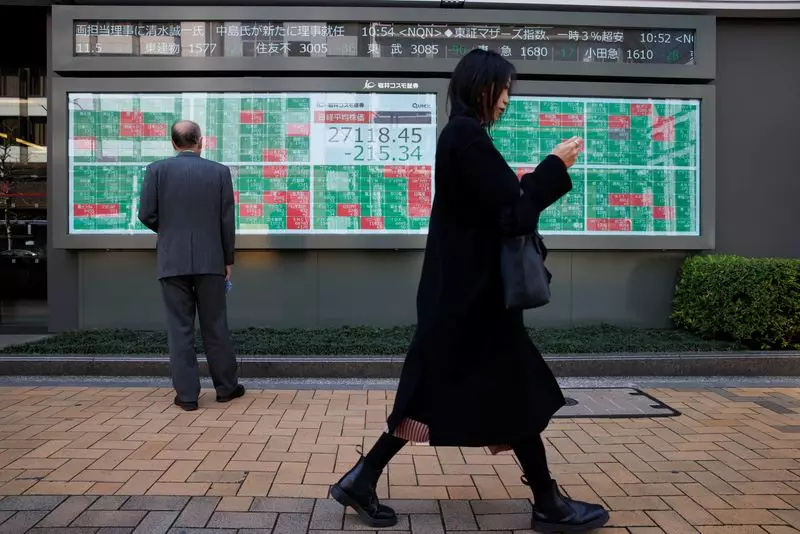Amidst choppy early trade on Wednesday, Asian stocks struggled to find stability as investors awaited a key U.S. inflation reading. The yen lingered just below the 160 per dollar level, prompting concerns of potential intervention by Japanese authorities. Adding to the uncertain climate, hawkish comments from Federal Reserve officials kept near-term U.S. rate cut expectations in check, providing a boost to the dollar.
MSCI’s broadest index of Asia-Pacific shares outside Japan displayed minimal movement at 566.55 amid choppy trading, inching away from the recent two-year high. However, the index remains up 3.5% in June, poised for its fifth consecutive month of gains. Despite this, Japan’s Nikkei and Taiwan stocks experienced a notable surge, driven by chipmakers, following a rally in the tech-heavy Nasdaq. Conversely, China stocks saw a decline, with the blue-chip CSI300 Index and the Shanghai Composite Index both down 0.2% and on track for a 4% decrease for the month. Similarly, Hong Kong’s Hang Seng index also exhibited a 0.16% decline.
Federal Reserve officials emphasized patience regarding interest rate cuts, with Governor Lisa Cook suggesting a rate cut if the economy’s performance aligns with expectations. Despite this sentiment, the timing of potential rate adjustments remains uncertain. The Federal Reserve Governor Michelle Bowman reaffirmed the notion of maintaining the policy rate steady for an extended period to combat inflation. As a result, market expectations regarding the timing and extent of rate cuts remained tempered.
Market analysts anticipate the release of the U.S. personal consumption expenditures (PCE) price index on Friday – the preferred measure of inflation for the Fed. Economists polled by Reuters anticipate a slight easing in annual growth to 2.6% in May. Ling from OCBC noted, “Barring new shocks, easing inflation and a labor market rebalancing could prompt the Fed to cut rates up to two times this year.” Traders are closely monitoring inflation data to gauge the potential for further monetary policy adjustments.
In the currency market, the dollar index stood steady against six peers, while the euro maintained a relatively stable position. The Australian dollar experienced a rise following accelerated consumer price inflation in May, leading to speculation of another rate hike in August. The yen continued to hover around the 160 per dollar level, prompting concerns of potential intervention following a recent low.
Amidst market uncertainty, oil prices remained relatively stable in Asian trade, with Brent crude oil futures holding at $85.02 a barrel. Conversely, gold prices saw a slight decline to $2,318 per ounce but remain significantly higher compared to earlier in the year. Gold touched a record high last month, reflecting market volatility and uncertainty.
Overall, the market remains cautious amid global economic uncertainty. The Federal Reserve’s approach to monetary policy, coupled with geopolitical tensions, continues to impact market sentiment and investment decisions. Traders and investors are advised to remain vigilant and adapt to changing market dynamics to navigate the current climate successfully.


Leave a Reply